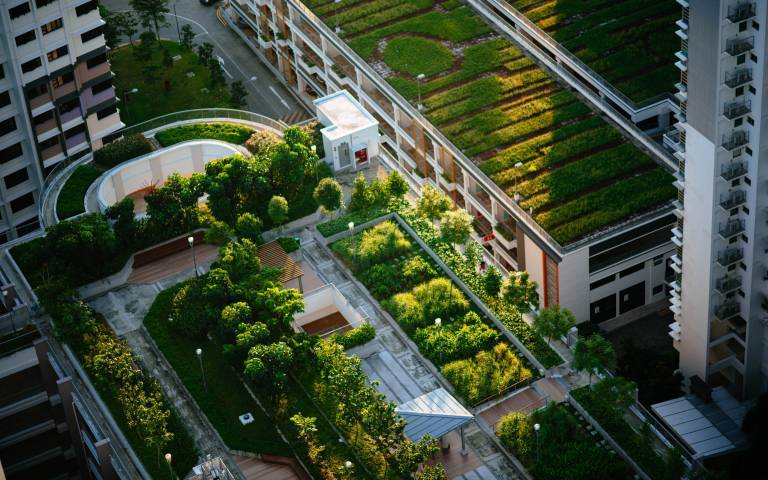New UN report looks towards zero-emissions, efficient and resilient building and construction sector
9 November 2022
Professor Ian Hamilton and Dr Harry Kennard of UCL Energy Institute have co-led the production of the 2022 Global Status Report for Buildings and Construction.

The report launched at COP27 in Egypt and is the flagship United Nations Environment Programme buildings sustainability report. It is delivered on behalf of the Global Alliance for Buildings and Construction (GlobalABC), with author contributions and data support from the Buildings Performance Institute Europe, the International Energy Agency and over 70 GlobalABC members worldwide.
Report highlights
This year’s report highlights both challenges and some signs of progress in efforts to decarbonise the global buildings sector.
- Operational CO2 emissions from buildings reached an all-time high of 10 GtCO2 in 2021, 5% above 2020 levels, and 2% above pre-pandemic levels in 2019.
- Despite a minor fall in the sector’s energy intensity, operational energy demand in 2021 hit an all-time high of 135 exajoules
- In 2021, investments in building energy efficiency increased by 16% to USD 237 billion, but growth in floor space outpacing efficiency efforts
- Gross floor area reached 242 billion square metres in 2022, up 11% on 2015 levels.
- 158 of country’s Nationally Determined Contributions (the decarbonisation roadmaps required by the Paris Climate Agreement) now mention buildings. 79 countries have building energy codes.
A focus on Africa and building materials
The report has special focus sections on alternative building materials, and the region of Africa.
Raw resource use is predicted to double by 2060 – with steel, concrete and cement already major contributors to greenhouse gas emissions. Materials used in the construction of buildings already account for around 9 per cent of overall energy-related CO2 emissions.
Embodied carbon in buildings – all emissions associated with materials and construction processes – needs to be tackled to avoid undermining energy-saving measures. However, the sector can reduce its impact by, for example, looking at alternative materials and decarbonizing cement.
The use of alternative materials is particularly relevant for Africa.
The African population is expected to reach 2.4 billion people in 2050 and 80 per cent of this growth will occur in cities. An estimated 70 per cent of the African building stock expected for 2040 has yet to be built.
To avoid increasing emissions while building the stock necessary to move people out of informal settlements, and to create buildings that are resilient to the impacts of climate change, the African sector should look at sustainable construction materials and techniques, in which the continent is rich.
Africa is also rich in renewable energy sources, solar and wind, which nations can use to power their buildings sustainably.
Key recommendations
The report issues a series of key recommendations for decision-makers, including:
- Build coalitions of national stakeholders to set targets and strategies towards a sustainable, zero-carbon and resilient buildings and construction sector through Buildings Roadmaps. Following the GlobalABC roadmaps process and model, more than 30 countries and territories have been developing roadmaps.
- National and sub-national governments must establish mandatory building energy codes and set a pathway for their building codes and standards to achieve net zero as soon as possible.
- Governments and non-state actors must increase their investment in energy efficiency.
- The construction and real estate industries must implement zero-carbon strategies for new and existing buildings.
- The building materials and construction industries must commit to reducing their CO2 emissions throughout their value chain.
- Governments, especially cities, need to implement policies that promote the shift to 'circular material economies'.
- Fast-growing countries and economies need investment in capacity-building and supply chains that promote energy-efficient designs, low-carbon and sustainable construction.
Links
- Download the report: 2022 GLOBAL STATUS REPORT FOR BUILDINGS AND CONSTRUCTION
- Professor Ian Hamilton
- Dr Harry Kennard
 Close
Close

